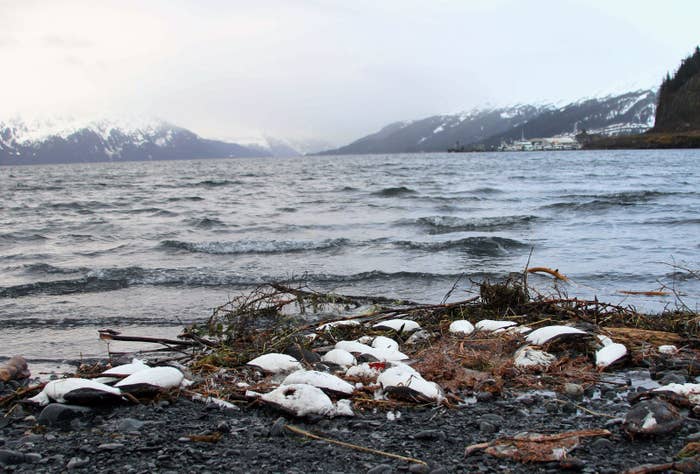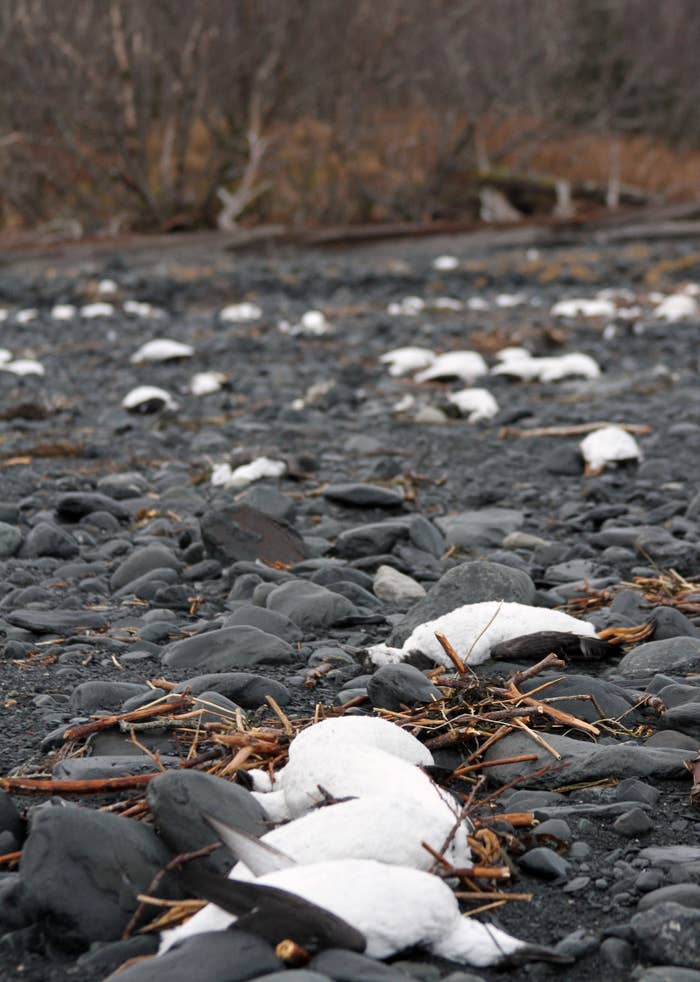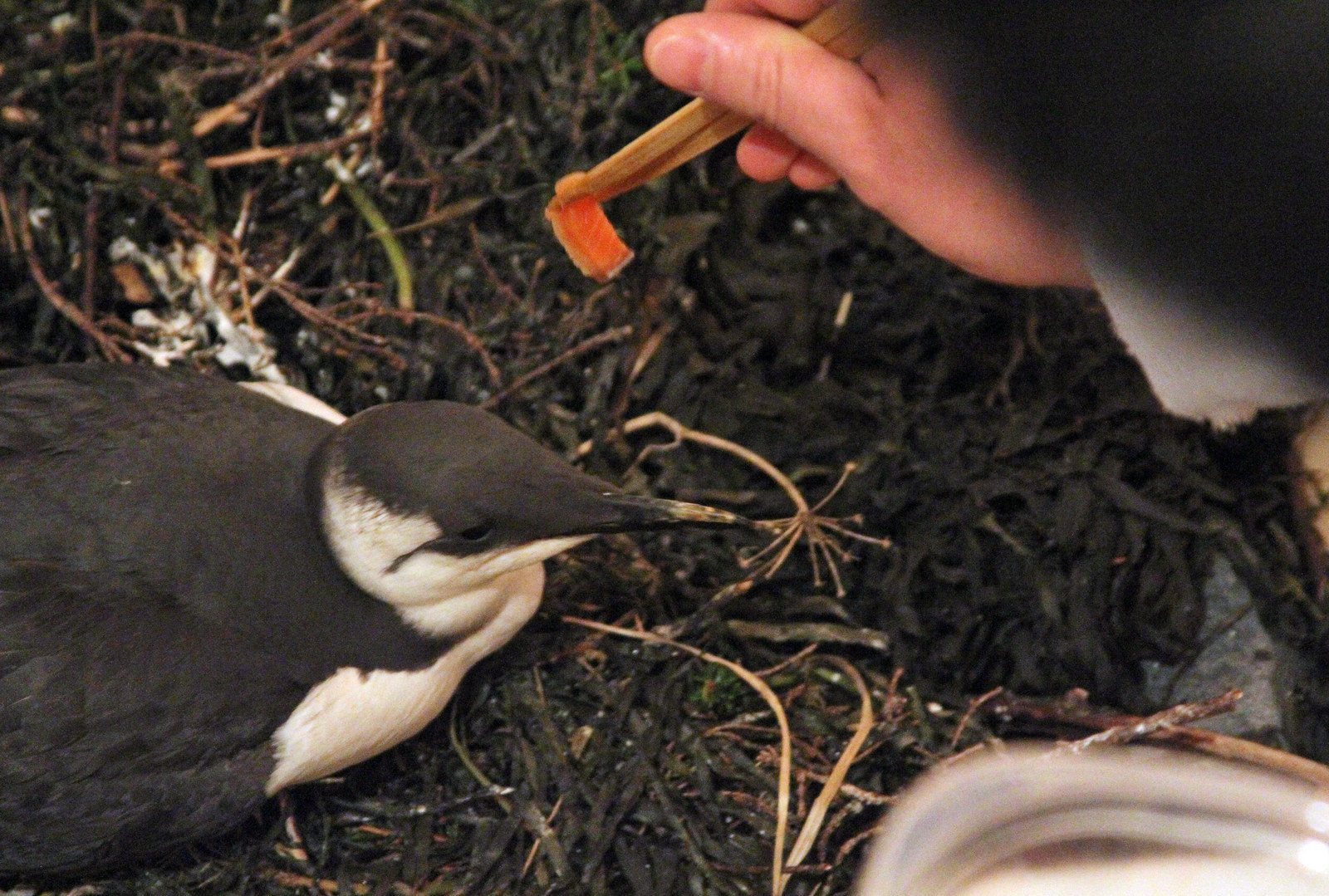
Thousands of dead seabirds found in Alaska in recent days could signal a die-off of unprecedented scale due to warming waters in the Pacific, biologists warn.
An estimated 8,000 dead murres were discovered last week near the Prince William Sound community of Whittier, John Piatt, a research wildlife biologist at the U.S. Geological Survey's Alaska Science Center, told the Associated Press.
"That's unprecedented, that sheer number in one location is off the charts," he said.
A larger search for what could potentially be thousands more dead or starving murres is now underway. The dead birds started showing up in late fall, but the trend has clearly taken a dramatic turn.

Known for their ability to dive and use their wings to "swim" up to 600 feet below water in search of prey, the murres depend on forage fish that, in turn, stick to a narrow band of cool water.
When those conditions are disrupted — even if by just a few degrees — the fish stock disappears, and so does murre prey.
That doesn't bode well for murres in 2016, with a mass of warm water still lingering in the North Pacific, and the warm weather phenomenon of El Niño persisting.
There have been mass murre die-offs in the past, most notably the Exxon Valdez oil spill in 1989, which saw an estimated 185,000 of the seabirds die. Then in 1993, extreme winter weather was blamed for the deaths of an estimated 120,000 of the birds.
But experts fear the latest die-off could be more disruptive if it's related to changing global weather and climate patterns. And it's getting the public's attention.
Andrea Medeiros, a spokeswoman for the U.S. Fish and Wildlife Service (USFWS), told the Alaska Dispatch News that a seabird expert got 50 calls over the weekend from concerned people finding dead murres on beaches.
"It’s turning out to be something that does have the potential for population-level effects," she said. “It is just off the chart as far as what we typically see with these events.”

According to the USFWS, the global world breeding population of murres is between 13 and 20 million, making it one of the most common Arctic birds. About 2.8 million breed in Alaska, employing a specialized nesting technique relies on clinging to cliff faces.
Now many are clinging to life.
"It was pretty horrifying," David Irons, a biologist who came across the grisly scene in Prince William Sound, told the AP. "The live ones standing along the dead ones were even worse."
